Jhansi Fort

It was built by Raja Bir Singh Ju Deo (1606-27) of Orchha on a rocky hill called Bangra in the town of Balwantnagar (presently known as Jhansi). Located in the heart of Jhansi city, the Jhansi Fort was one of the most important centres of resistance to the British colonial rule during the Revolt of 1857. It is this aura that surrounds the grand fort and draws thousands of visitors to Jhansi each year. The fort has ten gates ( Darwaza). Some of these are Khandero Gate, Datia Darwaza, Unnao gate, Jharna Gate, Laxmi Gate, Sagar Gate, Orcha Gate, Sainyar Gate, Chand Gate. Among places of interest within the main fort area are the Karak Bijli Toup (Tank), Rani Jhansi Garden, Shiv temple and a “Mazar” of Ghulam Gaus Khan, Moti Bai and Khuda Baksh. The Jhansi fort, a living testimony of ancient glamor and valour, also has a fine collection of sculptures which provide an excellent inside into the eventful history of Bundelkhand.
St. Jude’s Church

St. Jude’s Church is located in the Civil Lines of Jhansi, which is a famous tourist destination for Catholic Christians. The devotion to St. Jude Thaddaeus, was practically unknown in India, and it was the late Bishop F. X. Fenech who started it in Jhansi, which was a Prefecture Apostolic in those days. It was not easy to do especially during the World War II, but Bishop Fenech was a man of great faith, he made a promise to St. Jude that if he helped him, he would build a Shrine in Jhansi in his honour. He made use of the media available, publishing his intention in the Catholic Herald of England, in the Indian Catholic Newspaper – The Examiner and so on. The late Bishop F. X. Fenech was the first person who, together with his co-religionists, started praying in this church. Catholic devotees come here from far and near, and express their reverence towards this great saint. A festival is also celebrated every year for a week. This day is celebrated as St. Jude’s festival. This religious place, made up of Christian and Hindu architectural styles, attracts not only Christians but also people of other religions.
Garhmau Lake

Amidst the history and heritage, Garhmau Lake is a beautiful natural tourist site in Jhansi. Located about 2 km outside Jhansi on the NH 25 towards Kanpur and 12 km from Jhansi fort, Garhmau Lake sprawls over a vast area of 14 km. The pleasant environment of this place makes Garhmau Lake an ideal sightseeing place in Jhansi for picnicking and day outing. It is surrounded by low lying hills and is a popular getaway for tourists and Jhansi residents alike. The views of sunrise and sunset are something to look forward to in this popular attraction in Jhansi.
Atal Ekta Park
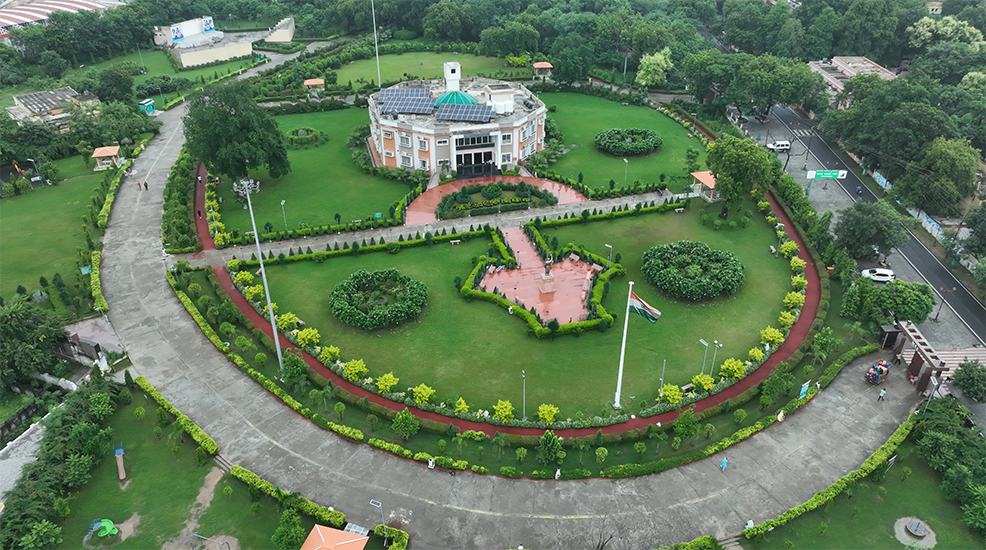
Atal Ekta Park is located in Jhansi city in civil line area. It comprises grand library surrounded by beautiful park. There is cultural stage where folk artists of Jhansi division perform their art and other various activities. Many state-of-the-art facilities like joggers track, library, cafeteria and open gym have been provided in this park for children, elderly and youth. The people of Jhansi and especially the children are very fond of Atal Ekta Park. The park also has a statue of former Prime Minister of India Bharat Ratna Late Shri Atal Vihari Vajpayee along with a grand library and a cafeteria.
Government Museum Jhansi
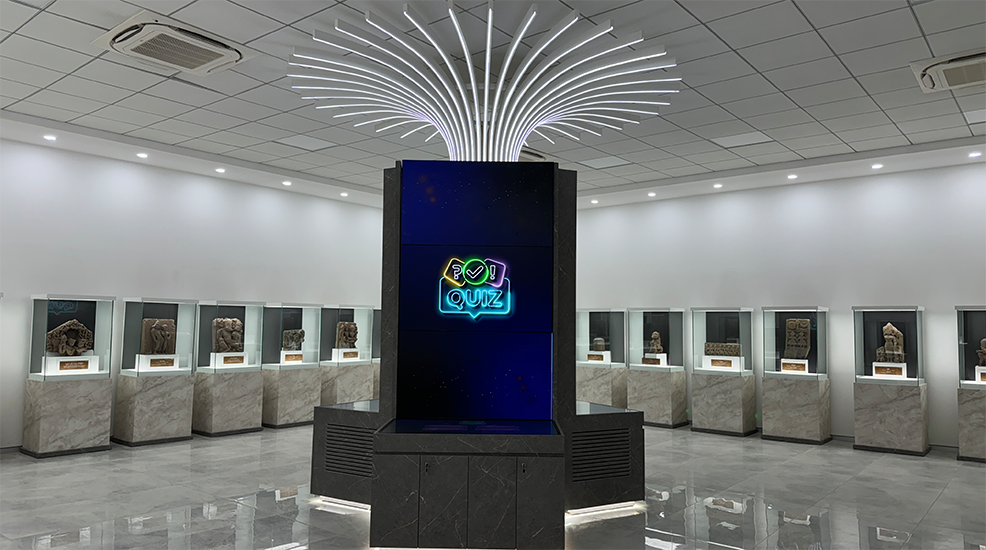
The State Government Museum of Jhansi is situated in the heart of Jhansi and is surrounded by beautiful parks. It has a fine collection of terracotta, bronzes, weapons, sculptures, manuscripts, painting and coins of gold, silver and copper. Weapons, statues, dresses and photographs that represent the Chandela dynasty and a picture gallery of the Gupta period are the highlights. Jhansi Development Authority has given a new look to the three galleries of the Government Museum. Here, preparations have been made to tell tourists about the history of Jhansi and Bundelkhand by using modern technology and digital mediums. These include virtual helicopter ride, time machine, virtual reality, battle scene, virtual bicycle ride, diorama, interactive book, coin display, knowledge fountain, rotoscope, interactive wall, digital binoculars, virtual balance area.
Rani Mahal
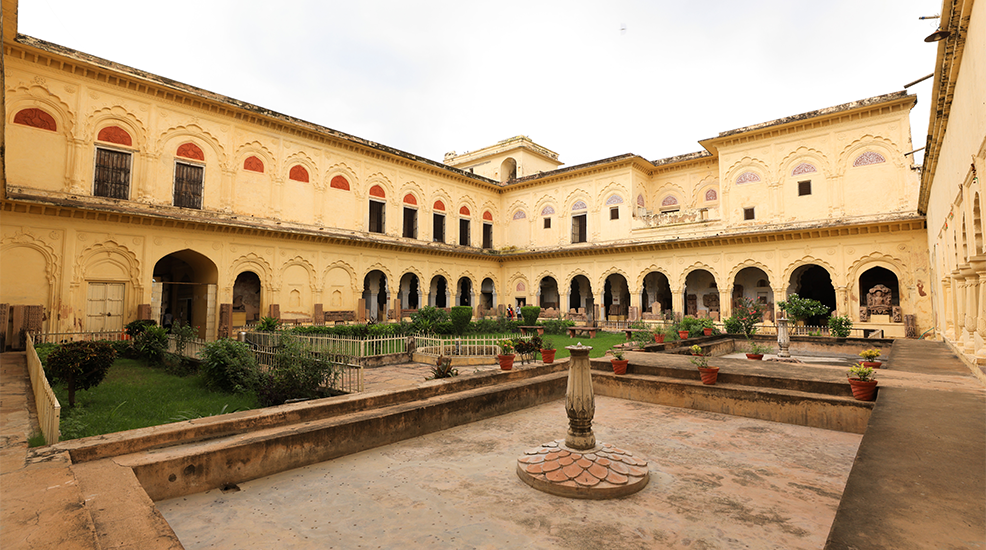
Rani Mahal in Jhansi, translating to the queen's palace, is the former residence and royal palace of Rani Lakshmi Bai. Built in the 18th century, a large part of this beauty was destroyed during the Indian Rebellion. However, it was later renovated into a museum with artefacts from the 9th century and life of Rani Lakshmibai. one of the most prominent but often ignored buildings is the Rani Mahal, where she lived from 1853 to 1857. Located inside Jhansi city, it was in the Rani Mahal that Indian fighters approached the Rani and urged her to take over the leadership of the Revolt in 1857. After they annexed Jhansi in 1853 under the Doctrine of Lapse, the British East India Company forced Rani Laxmibai to vacate the fort and move to the Raj Mahal in the old city. She lived here from 1853 to 1857. As a result, it came to be known as ‘Rani Mahal’. The most magnificent room in the building is the richly painted Durbar Hall on the first floor, where the Rani used to hold her court. It was here that the Rani met the famous British lawyer John Lang in 1854, for her legal battle against the British East India Company, after they annexed Jhansi. And it is here, during one of these meetings, that she is said to have exclaimed, “Main Apni Jhansi nahi doongi”
Cenotaph of Raja Gangadhar Rao
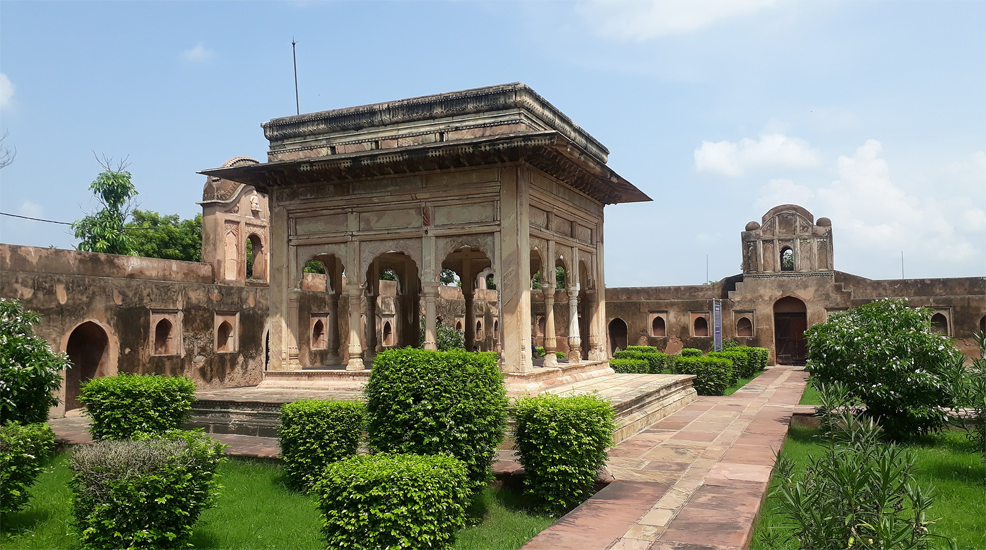
The Cenotaph of Raja Gangadhar Rao, the Raja of Jhansi, was built after his death by his queen, Rani Lakshmibai in 1853. Raja Gangadhar Rao ki Chhatri is located near Mahalakshmi temple beside the Lakshmi Lake in Jhansi. The cenotaph is surrounded by a lush green garden, an adjacent pond and rich architectural designs. The reign of Gangadhar Rao lasted for a decade from 1843 – 1853 making this a site of historical magnificence that still stands to occupy the cultural heritage of Jhansi. Legend has it that Maharani Lakshmibai used to visit the Lakshmi temple every day. The structure stands in the middle with high walls carved hollow on all four sides with 18th-century architectural designs.
Major Dhyanchand Museum
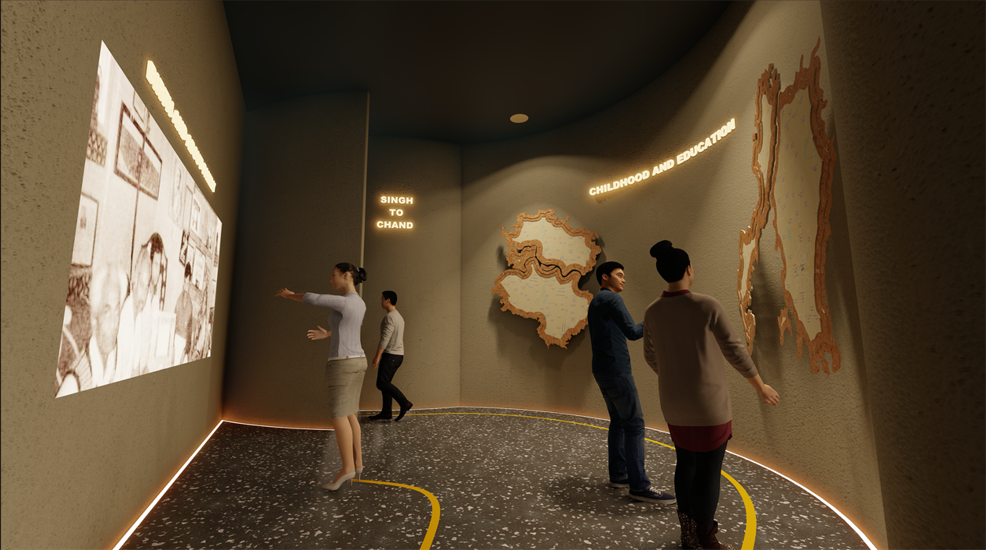
Major Dhyanchand is a well-known personality for the whole world. He has been the greatest hockey player of all the time. To pay the gratitude to this greatest player ever, Jhansi Smart City Ltd, developed a museum on his name 'Major Dhyanchand Museum'. This museum is situated in the city Jhansi of Uttar Pradesh, India. This is inside the Rani Laxmibai Park of Civil Lines area of Jhansi City. Major Dhyanchand Museum has been made available to the tourist visiting Jhansi after the inauguration of the same by Hon'ble Chief Minister of Uttar Pradesh Government - Sh. Yogi Adityanath Ji on Birthday of Major Dhyanchand-29th August 2023 (also celebrated as National Sports Day of India). Major Dhyanchand Museum is World's second and Asia's and India's first hockey museum, dedicated to Major Dhyanchand. Firs time in history, this museum showcases the Olympic Medals won by Major Dhyanchand along with his personal belongings related to hockey. Major Dhyanchand Museum showcases the details of personal and sports lives of Major Dhyanchand with the help of digital displays equipped with advanced technology. Other important attractions of this museum are cyclorama, holographic selfie, interactive games, replica of Major Dhyanchand National Hockey Stadium, New Delhi and more interesting displays.
Mahalakshmi Temple
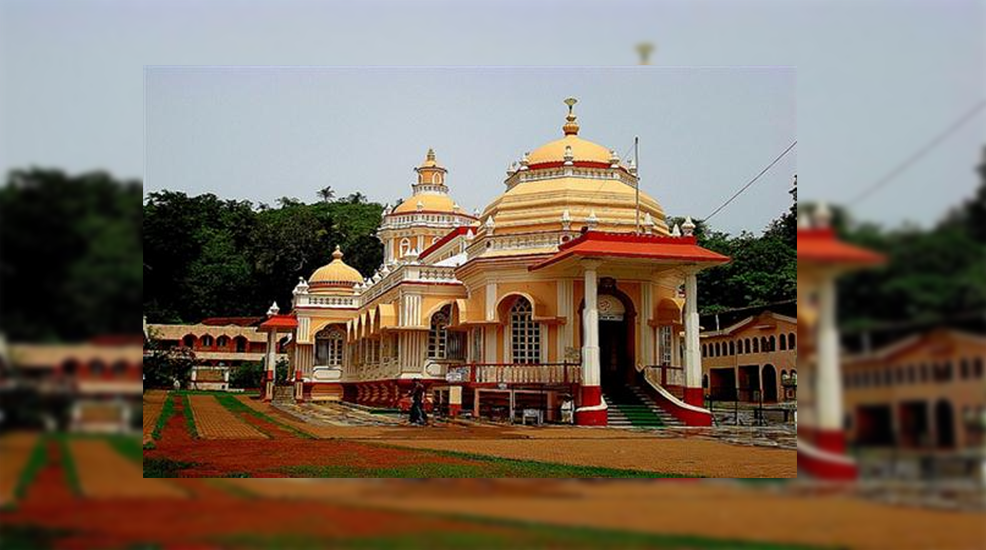
Mahalakshmi Temple is situated on the banks of Lakshmi Tal, a famous lake in the city of Jhansi. The ancient temple stands in honour of Goddess Lakshmi, the goddess of good fortune, wealth and prosperity according to the Hindu religion. With beautiful architecture that is adorned with sculptures of Hindu deities and intricate carvings; this temple is one of the most prestigious heritage sites of Jhansi. The Mahalakshmi Temple, built before the celebrated Rani Laxmi Bai’s rise to power, is a heritage site, having witnessed significant events that shaped the history of Jhansi. As a result, one may visit the destination to get an understanding of the rich culture and lifestyle belonging to Jhansi. It is frequently visited by devotees, particularly during festivals such as Diwali, a time of year that entertains pilgrims from all parts of the country. One must visit this temple to observe and experience adoration of devotees like no other.
Karguvanji Jain temple
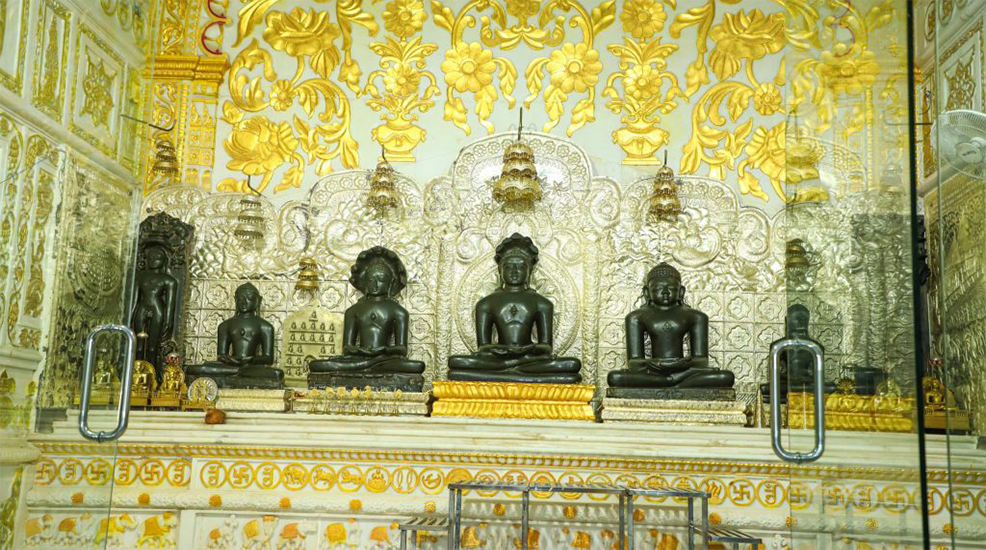
Karguvanji Jain temple is a 700-year-old temple, resting amidst the vicinity of Jhansi city. It is an important pilgrimage for Digambar Jains, a sect that believes in renouncing all material things to attain salvation – including clothes. The full name of the temple is Shri Digamber Jain Atishaya Kshetra Sanvaliya Parasnath Karguvanji, Atishay Kshetra meaning a place of miracles. As the name suggests, the biggest idol installed is of Parshvanatha (the 23rd Tirthankara) whose symbol is a snake. Situated on Jhansi-Kanpur highway, Karguanji temple has an interesting history. The story goes back to the time of Peshwas when the dream of a man named Shri Singhai Nanheju led to the discovery of idols hidden underground. The temple also has an in house facility for pilgrims.
Panchatantra Park

Panchatantra Park is an animal-themed park mainly for children in Jhansi based on the ‘Panchatantra’ book by Vishnu Sharma. Apart from several animal-themed slides for the children, this park also has a jogging track for adults. The park was developed by the Jhansi Development Authority on a vast stretch of a green patch in the middle of the city of Jhansi mainly for the children with exciting Panchatantra themed animal statues. Over the years, this has not only been an exciting spot for children but also adults for morning and evening walks where they can enjoy a soothing pollution-free environment, away from the hustle-bustle of the city.
Madia MahadevMandir
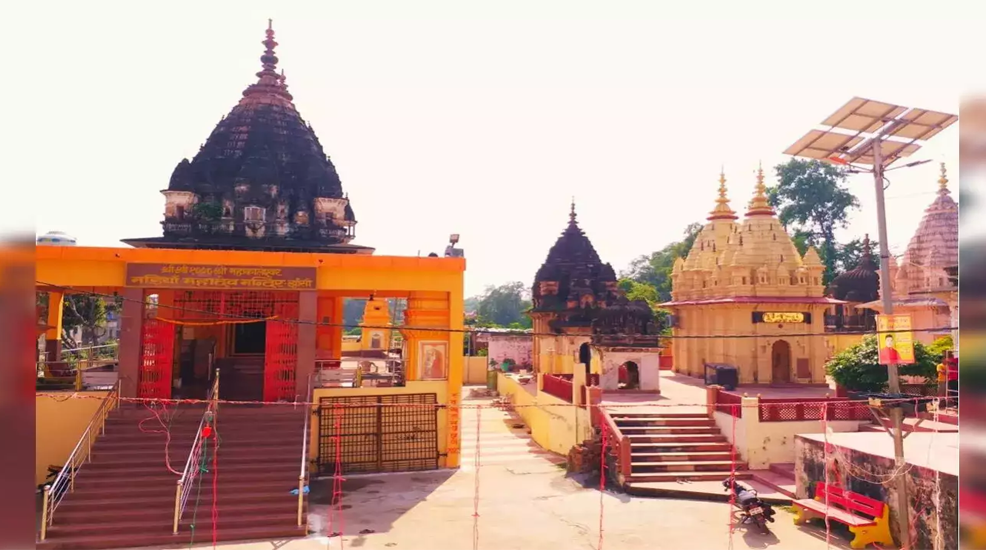
It is a group of temples located in the heart of Jhansi city in Jhokan bagh area. These temples are believed to be built by Gusain sant of this region who also ruled in the Jhansi district for few years. It is also believed that these temples are built over samadhis of Gusain Sant dedicated to lord Shiva. The major temple is known as Mahakaleswar temple which has a large Shiva linga of Kasauti -stone (basalt stone) in its sanctum sanctorum. The group of temple is protected monument of U.P. State Archaeological department.
Jarai Ka Math
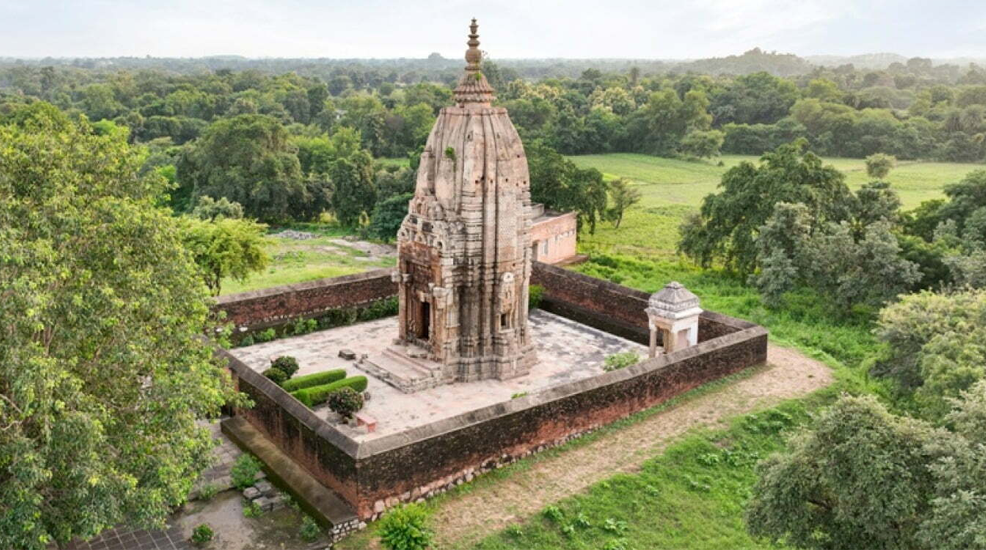
Located about 18 km from Jhansi city on the Jhansi – Khajuraho road, it is believed to be built by Pratihara ruler. To the north-east of the Baruasagar lake are the ruins of two old Chandela temples. Nearby is the later Gupta period temple known as Jarai-ka-Math. It is dedicated to Shiva and Parvati. The eastern side of its shikhara is lavishly ornamented with massive stone sculpture. It is a stone temple built during 9th century. Located about 18 km from Jhansi city on the Jhansi – Khajuraho road, it is believed to be built by Pratihara ruler. The temple consists of various kinds of sculptures including the beautiful sensuous ones depicted on the walls.
Baruasagar fort

The beautiful fort complex of Baruasagar was built as a summer retreat for the Rajas of Orchha, and has been witness to some historic events. Baruasagar, 22 km south-east of Jhansi, was built by the Bundela Raja Udit Singh of Orchha between 1705 and 1707 CE. He also built the large lake adjacent to it. Inside the fort complex were palaces and several small temples.
Space Museum
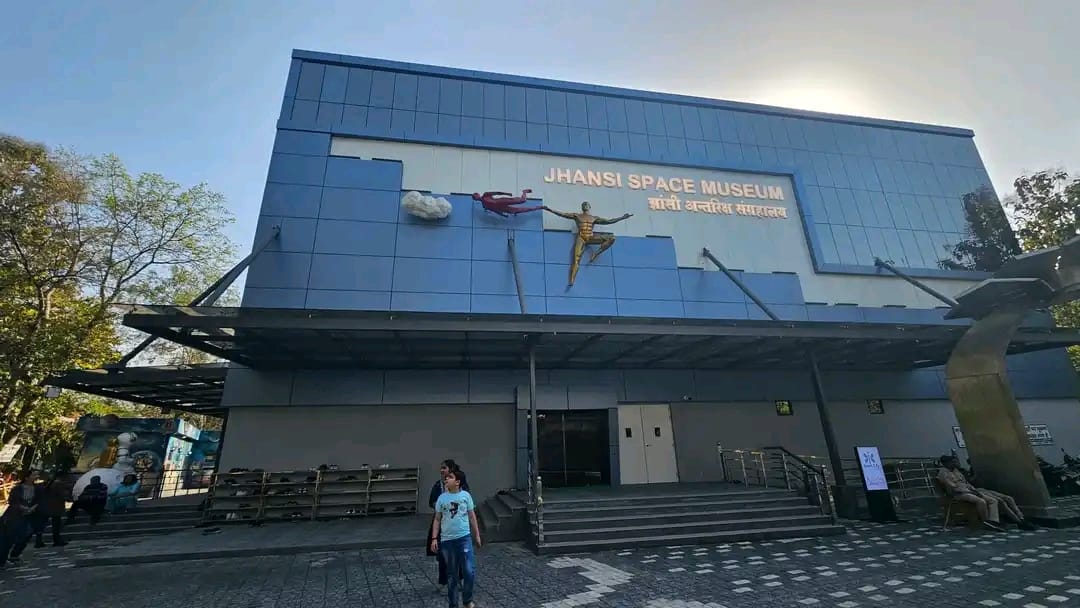
The Space Museum in Jhansi, is a fascinating destination for space enthusiasts and those curious about the universe. It's a place where you can explore the wonders of space exploration, learn about the history of space missions, and marvel at exhibits showcasing various aspects of astronomy and astrophysics. Space Museum located in the Rani Laxmi Bai Park near to Major Dhyanchand Hockey Museum. It helps to educate visitors about astronomy, astrophysics, and the broader universe black holes, galaxies, and the search for extraterrestrial life.
Urban Haat
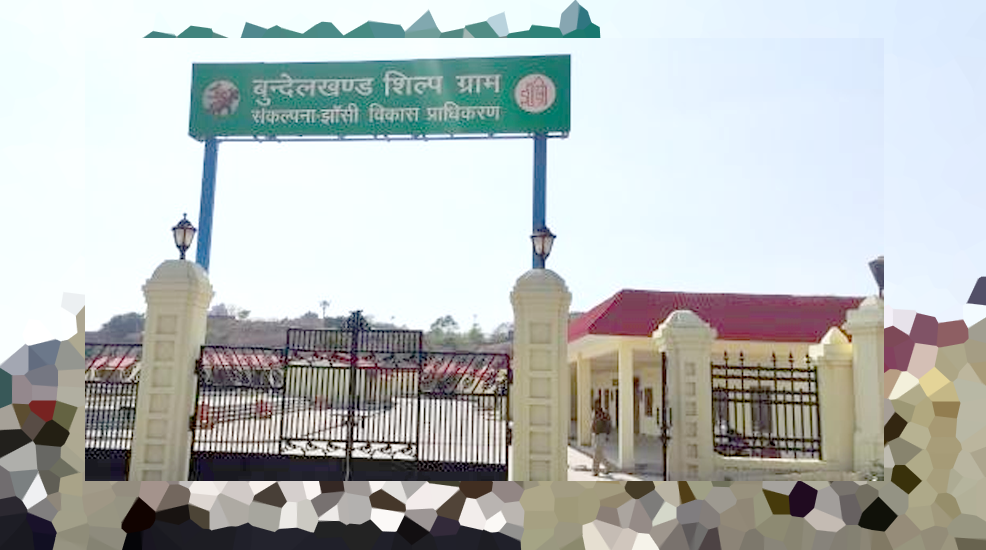
Urban Haat is a cultural and commercial center located in Jhansi, which serves as a platform for the local people. The Urban Hut was constructed by Jhansi Development Authority for the purpose of cultural programs and for artisans, craftsmen and museums to paint their respective sculptures and perform drama. Urban Haat has been constructed in 06 acres of land near the fairground of Jhansi Fort which has 55 shops, 32 open platforms, 08 food-courts, administrative building, ATM, meeting hall, 04 exhibition hall, 01 museum, 01 amphitheater, 03 Facilities like toilet and parking area etc. have been ensured.